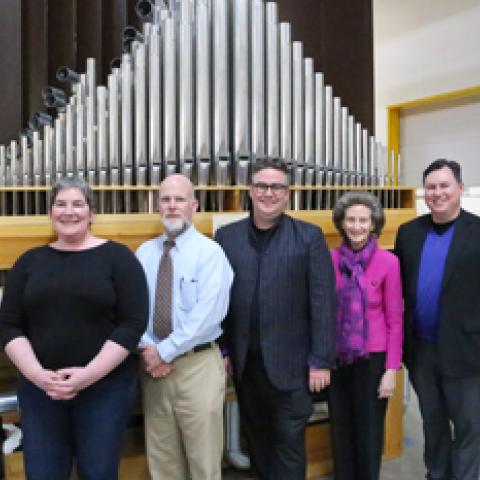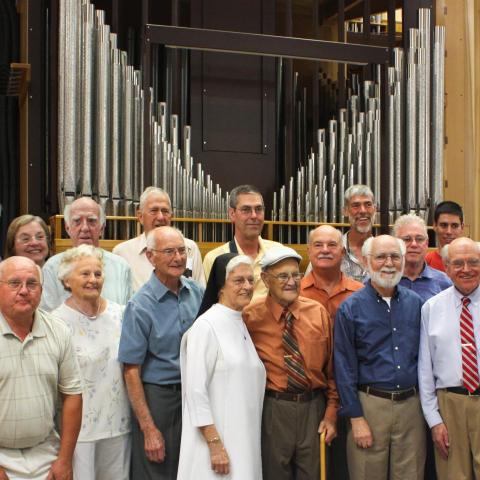
The work of Schoenstein & Co. in Dallas, Texas was celebrated with weekend activities, January 26–27. Schoenstein & Co.—1992–2012—A Retrospective, a day-long organ crawl and demonstration, provided the opportunity for participants to see and hear four instruments by the same builder in the same city. The day began at Wynne Chapel, Highland Park Presbyterian Church, home of Schoenstein No. 119, 1992, a three-manual, 37-rank “symphonic organ in miniature.” Jack Bethards, Schoenstein’s president and tonal director, gave a history of the firm and overview of their symphonic/romantic tonal philosophy. Organist and associate director of music Michael Shake demonstrated various tonal colors and performed solo works. The next stop was Spring Valley United Methodist Church. Its Schoenstein organ, No. 134, 1999, of three manuals and 34 ranks with two double expressive divisions, was demonstrated by John Tarver.
Following a box lunch, the largest of the instruments was heard at Park Cities Presbyterian Church. A 90-rank instrument, combining both a four-manual chancel organ and a two-manual gallery organ (Schoenstein Nos. 150 & 151, 2006 and 2007), it is an example of a church organ in the symphonic style. Schoenstein’s vice-president Louis Patterson guided participants on a brief look inside the chancel organ. Organist and associate director of music Colin Howland played Tchaikovsky’s 1812 Overture, assisted by a four-man percussion battery to conclude the day.
The second day of activities focused around a celebration of the twentieth anniversary of the organ at Wynne Chapel, Highland Park Presbyterian Church, Schoenstein’s first fully symphonic organ with double expression. Professor Thomas Murray of Yale University, who inaugurated the organ in 1993, returned for a pair of recitals, with music of Bach, Saint-Saëns, Rheinberger, Elgar, and Widor. The event was organized by Michael Shake with his colleagues John Tarver and Colin Howland.
For information: www.schoenstein.com.




